Themed collection 10th Anniversary: Most popular articles

Blood compatible materials: state of the art
Approaches to thromboresistant materials are discussed including passivation; incorporation and/or release of anticoagulants, antiplatelet agents, thrombolytic agents; and mimicry of the vascular endothelium.
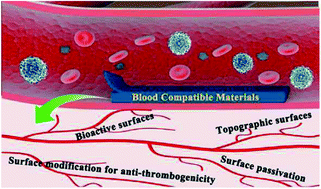
J. Mater. Chem. B, 2014,2, 5718-5738
https://doi.org/10.1039/C4TB00881B
Hydrogels for tissue engineering and regenerative medicine
Injectable hydrogels have become an incredibly prolific area of research in the field of tissue engineering and regenerative medicine, because of their high water content, mechanical similarity to natural tissues, and ease of surgical implantation, hydrogels are at the forefront of biomedical scaffold and drug carrier design.
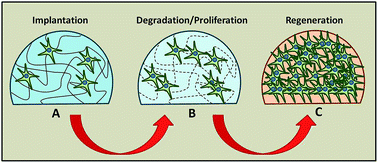
J. Mater. Chem. B, 2014,2, 5319-5338
https://doi.org/10.1039/C4TB00775A
Chitosan-based scaffolds for bone tissue engineering
Chitosan bone scaffolds including porous sponges, nanofibers and hydrogels are highlighted along with scaffold fabrications and the influence of processing parameters on scaffold properties.

J. Mater. Chem. B, 2014,2, 3161-3184
https://doi.org/10.1039/C4TB00027G
Injectable biodegradable hydrogels: progress and challenges
Over the past decades, injectable hydrogels have emerged as promising biomaterials because of their biocompatibility, excellent permeability, minimal invasion, and easy integration into surgical procedures.
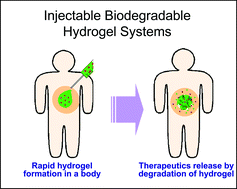
J. Mater. Chem. B, 2013,1, 5371-5388
https://doi.org/10.1039/C3TB20940G
Hydrogen-bonds in molecular solids – from biological systems to organic electronics
Hydrogen-bonding (H-bonding) is a relatively strong, highly directional, and specific noncovalent interaction present in many organic molecules, and notably is responsible for supramolecular ordering in biological systems. This article aims to highlight recent work on the application of nature-inspired H-bonded organic molecules in organic electronic devices.
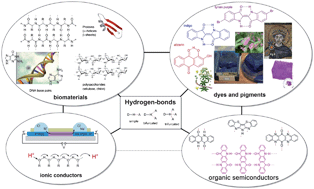
J. Mater. Chem. B, 2013,1, 3742-3753
https://doi.org/10.1039/C3TB20193G
Cryogels for biomedical applications
This review highlights recent advances in cryogelation techniques and starting materials that can be utilised to synthesise biocompatible and biologically relevant cryogels as well as discussing physicochemical characterisation techniques for these materials. It also discusses emerging trends in the application of cryogels, particularly as 3D ECM mimicking scaffolds for cell culture and tissue engineering.

J. Mater. Chem. B, 2013,1, 2682-2695
https://doi.org/10.1039/C3TB20280A
Carbon “quantum” dots for optical bioimaging
Carbon “quantum” dots and their uses as high-performance yet nontoxic fluorescence agents for optical bioimaging are highlighted and discussed.

J. Mater. Chem. B, 2013,1, 2116-2127
https://doi.org/10.1039/C3TB00018D
Chitosan-based smart hybrid materials: a physico-chemical perspective
An overview of the properties of chitosan-based materials: polyelectrolyte complexes, gels, chitosan-surfactant complexes, smart coatings, organic–inorganic hybrids.

J. Mater. Chem. B, 2021,9, 594-611
https://doi.org/10.1039/D0TB01865A
Substituted hydroxyapatite coatings of bone implants
This review is a comprehensive overview and analysis of the most important advances in the field of substituted hydroxyapatite coatings.

J. Mater. Chem. B, 2020,8, 1781-1800
https://doi.org/10.1039/C9TB02710F
The great escape: how cationic polyplexes overcome the endosomal barrier
Endo-lysosomal escape strategies of cationic polymer-mediated gene delivery at a glance.

J. Mater. Chem. B, 2018,6, 6904-6918
https://doi.org/10.1039/C8TB00967H
Wearable and flexible sensors for user-interactive health-monitoring devices
The development of flexible and wearable healthcare devices facilitates a real-time monitoring of body activities as well as detecting various biosignals, which provided useful information to manage one's health condition for personal health monitoring.
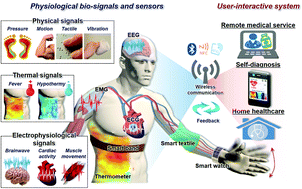
J. Mater. Chem. B, 2018,6, 4043-4064
https://doi.org/10.1039/C8TB01063C
Application of semiconductor quantum dots in bioimaging and biosensing
In this review we present new concepts and recent progress in the application of semiconductor quantum dots (QD) as labels in two important areas of biology, bioimaging and biosensing.
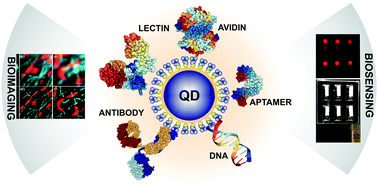
J. Mater. Chem. B, 2017,5, 6701-6727
https://doi.org/10.1039/C7TB01425B
Optical nanoprobes for biomedical applications: shining a light on upconverting and near-infrared emitting nanoparticles for imaging, thermal sensing, and photodynamic therapy
Shining a light on spectrally converting lanthanide (Ln3+)-doped nanoparticles: progress, trends, and challenges in Ln3+-nanoprobes for near-infrared bioimaging, nanothermometry, and photodynamic therapy.
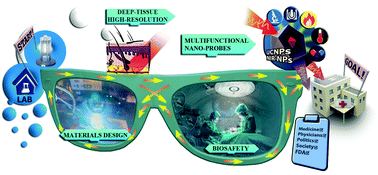
J. Mater. Chem. B, 2017,5, 4365-4392
https://doi.org/10.1039/C7TB00403F
Thermo-responsive polymers and their application as smart biomaterials
This review summarises smart thermo-responsive polymeric materials with reversible and ‘on–off’ remotely switchable properties for a wide range of biomedical and biomaterials applications.
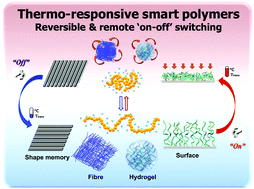
J. Mater. Chem. B, 2017,5, 4307-4321
https://doi.org/10.1039/C7TB00157F
Antibacterial activity of graphene-based materials
Current efforts in the formulation of graphene-based nanocomposites with antimicrobial and antibiofilm activities in fighting against bacterial targets are reviewed.
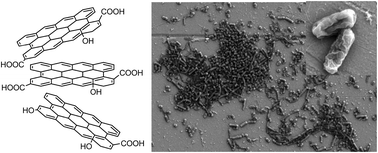
J. Mater. Chem. B, 2016,4, 6892-6912
https://doi.org/10.1039/C6TB01647B
Non-toxic, non-biocide-release antifouling coatings based on molecular structure design for marine applications
Antifouling (AF) coatings bring economic benefits but raise environmental and health concerns. Non-toxic, non-biocide-release AF strategies are reviewed according to “detachment of biofoulants” and “prevention of attachment” approaches. Chemical and physical aspects of AF mechanisms and new amphiphilic, superhydrophilic and topographic AF strategies are discussed.

J. Mater. Chem. B, 2015,3, 6547-6570
https://doi.org/10.1039/C5TB00232J
Nanoscale patterning of polymers on DNA origami
Structurally precise biohybrid nanomaterials were created by grafting various polymers to DNA with high conversions under ambient conditions. They are patterned onto DNA origami nanostructures to form customizable surface contours.

J. Mater. Chem. B, 2022,10, 7512-7517
https://doi.org/10.1039/D2TB00812B
Water-soluble and phosphorus-containing carbon dots with strong green fluorescence for cell labeling
Microwave-assisted pyrolysis of natural phosphorus-rich phytic acid under the passivation of diamine offers a facile way to synthesize carbon dots with strong green fluorescence for bioimaging and biolabeling.

J. Mater. Chem. B, 2014,2, 46-48
https://doi.org/10.1039/C3TB21370F
In situ engineering of Au–Ag alloy embedded PEDOT nanohybrids at a solvent/non-solvent interface for the electrochemical enzyme-free detection of histamine
In situ polymerization at a bi-solvent interface produced Au–Ag alloy embedded PEDOT nanohybrids for non-enzymatic histamine detection. The composite demonstrated practical viability by detecting histamine produced by sub-cultured human neural cells.

J. Mater. Chem. B, 2023,11, 1144-1158
https://doi.org/10.1039/D2TB02637F
Boron clusters (ferrabisdicarbollides) shaping the future as radiosensitizers for multimodal (chemo/radio/PBFR) therapy of glioblastoma
The cellular damage response induced by γ-rays, X-rays and proton beams suggest these type of radiations are promising therapeutic modalities against resistant glioblastoma tumours when combined to stable metallacarboranes as radiosensitizers and PBFR.
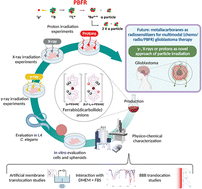
J. Mater. Chem. B, 2022,10, 9794-9815
https://doi.org/10.1039/D2TB01818G
Transition metallo-curcumin complexes: a new hope for endometriosis?
The metallo-curcumin complexes, copper–curcumin and nickel–curcumin, are promising anti-endometriotic agents due to their high antioxidant activity, selective cytotoxicity and active transport mediated accumulation in endometriotic cells.
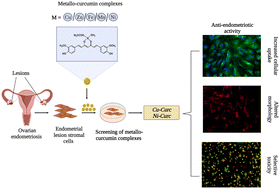
J. Mater. Chem. B, 2022,10, 9682-9698
https://doi.org/10.1039/D2TB01651F
Metal-phenolic networks as tuneable spore coat mimetics
Bacillus subtilis are probiotic microbes that are difficult to formulate when they are not in their spore form. Using self-assembling coatings, these cells were successfully protected during the freeze-drying process.

J. Mater. Chem. B, 2022,10, 7600-7606
https://doi.org/10.1039/D2TB00717G
Surfaces with antifouling-antimicrobial dual function via immobilization of lysozyme on zwitterionic polymer thin films
A novel coating with antifouling and antimicrobial dual functions was fabricated to prevent transmission and spread of infectious diseases.
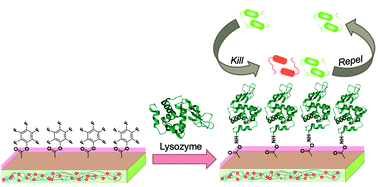
J. Mater. Chem. B, 2022,10, 2728-2739
https://doi.org/10.1039/D1TB02597J
Construction of a stereocomplex between poly(D-lactide) grafted hydroxyapatite and poly(L-lactide): toward a bioactive composite scaffold with enhanced interfacial bonding
Hydroxyapatite (HAP) grafted with poly( D-lactide) (PDLA) was incorporated into poly(L-lactide) (PLLA) to construct a stereocomplex, thus improving the interfacial bonding between PLLA and HAP like a zip-lock structure in a scaffold.
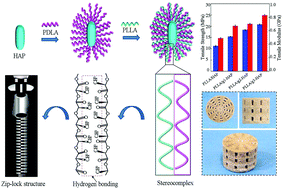
J. Mater. Chem. B, 2022,10, 214-223
https://doi.org/10.1039/D1TB02111G
Screening of bio-compatible metal–organic frameworks as potential drug carriers using Monte Carlo simulations
GCMC simulation is the workhorse for simulating adsorption phenomena, explaining and predicting new experimental results for drug delivery applications.

J. Mater. Chem. B, 2014,2, 766-774
https://doi.org/10.1039/C3TB21328E
Luminescent S-doped carbon dots: an emergent architecture for multimodal applications
S-doped carbon quantum dots have been synthesized and employed as a luminescent probe for multimodal applications.
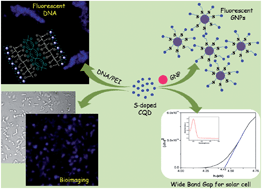
J. Mater. Chem. B, 2013,1, 2375-2382
https://doi.org/10.1039/C3TB00583F
PEGylated reduced graphene oxide as a superior ssRNA delivery system
The current work demonstrates that PEGylated reduced graphene oxide (PEG–RGO) has superior ssRNA loading and intracellular delivery capability, compared with its unreduced derivative, the widely studied PEG–GO.
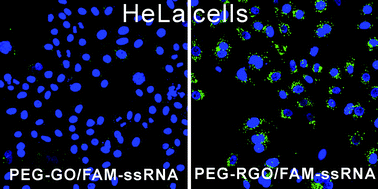
J. Mater. Chem. B, 2013,1, 749-755
https://doi.org/10.1039/C2TB00096B
About this collection
As part of the celebrations for Journal of Materials Chemistry B’s 10th Anniversary in 2023, we wanted to celebrate some of the most exceptional research that you, our authors, have published in the journal over the last 10 years.
This online article collection features our most popular articles and reviews since the launch of the journal in 2013. This collection has been curated in honour of those authors who have provided truly impactful, timeless, and high-quality research articles and reviews. The featured articles have been hand picked from a decade of exceptional work, including some of the most highly cited and downloaded content that has been published in Journal of Materials Chemistry B.
All articles in the collection are free to read until 21st September 2023
Why not check out our most popular articles in Journal of Materials Chemistry B and C in celebration of their 10th anniversary?
Journal of Materials Chemistry A 10th Anniversary: Most popular articles
Journal of Materials Chemistry C 10th Anniversary: Most popular articles